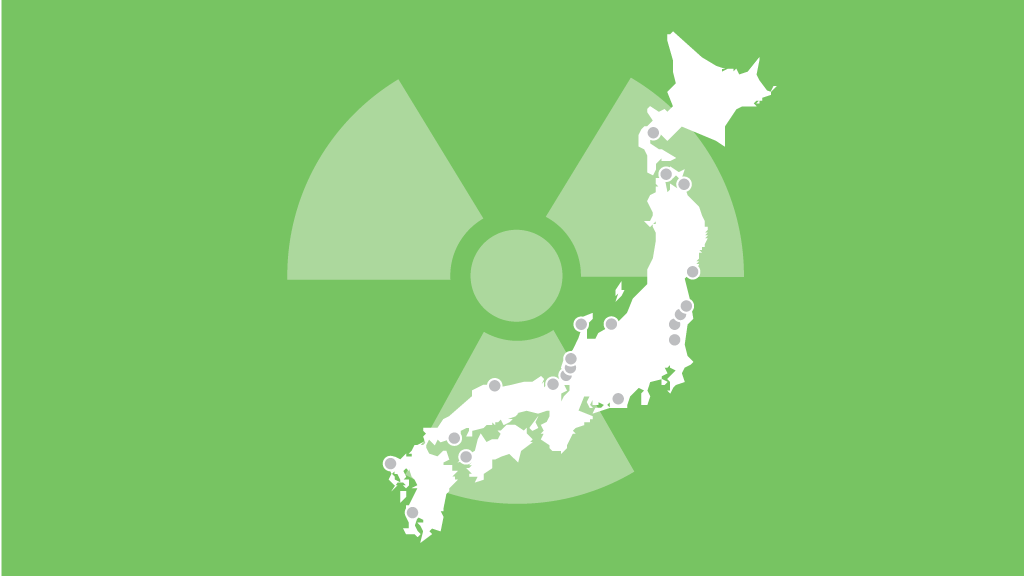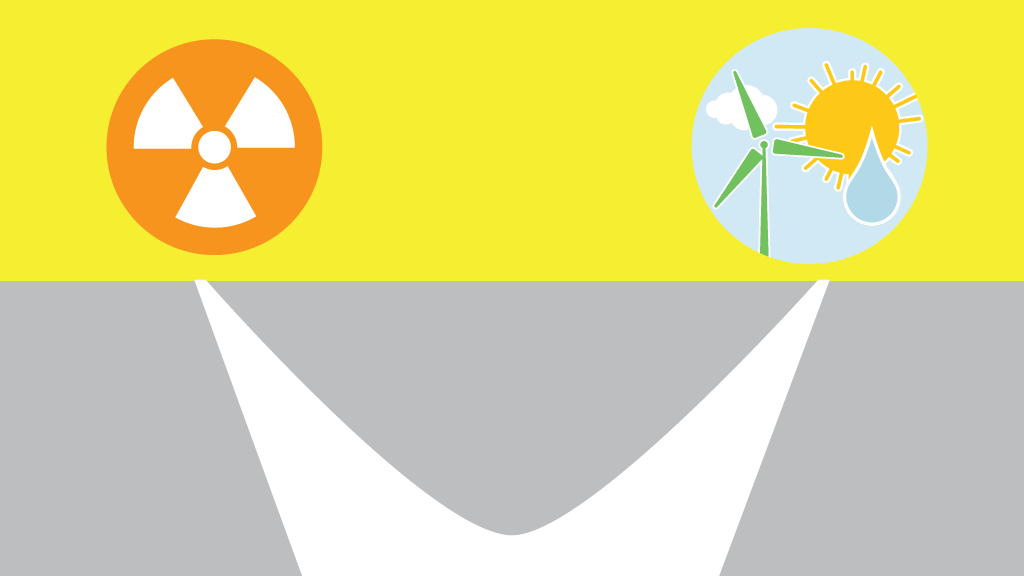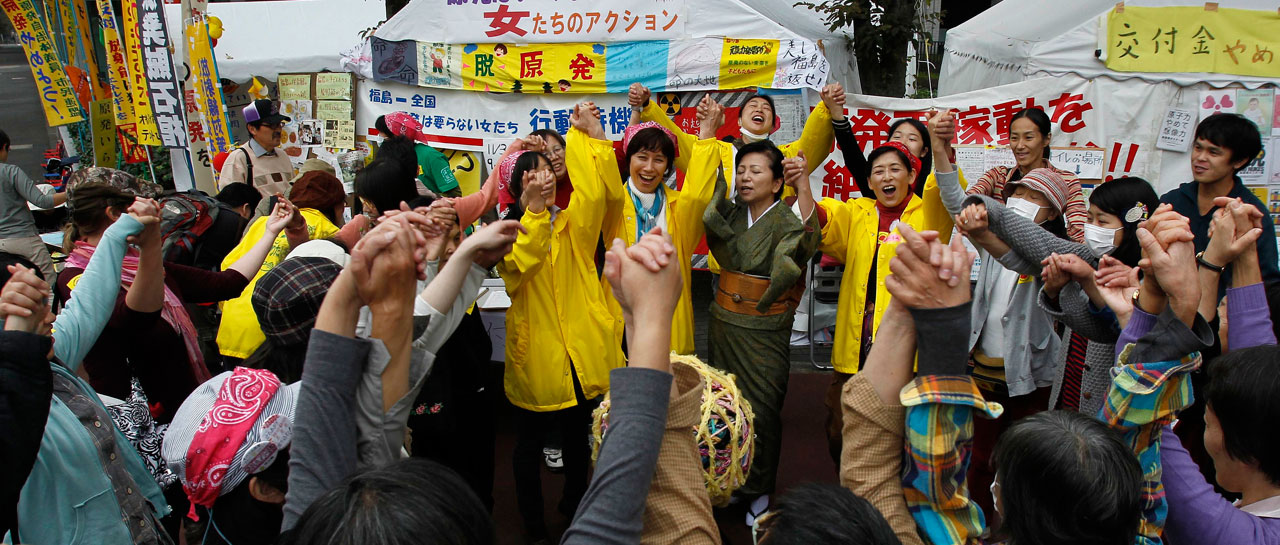Citizens living up to 70 km (45 mi.) away sued Kansai Electric and won.
We want to protect Kyoto’s cultural heritage from radioactive contamination.
We want to protect the lagest lake in Japan, Lake Biwa, the water for 14 million people.
Energy Security and Nuclear Power: The Case of Japan
Experiences and Lessons on Energy Security and Nuclear Power: The Case of Japan
Presentation by Aileen Mioko Smith, Executive Director, Green Action
This presentation gives an overview of the nuclear power situation in Japan. It includes information on public opinion polls.
Note: As of August 11th, one reactor has restarted (Sendai Nuclear Power Plant Unit 1.) All other Japanese reactors remain shut.
Download: Experiences and Lessons on Energy Security and Nuclear Power-The Case of Japan (PDF)
Japan: A Land of Earthquakes and Nuke Plants?
Japan is the only country in the world where dozens of nuclear power plants and earthquake-prone areas overlap. The black dots on this map represent locations of past earthquakes. The red dots represent the location of the 54 nuclear power plants in Japan, four of them reactors at Fukushima that suffered the accident on March 11, 2011.
Green Action has played a key role in addressing the problem of active earthquake faults under nuclear power plants, particularly under the Ohi Units 3 and 4 nuclear power plant reactors in Fukui Prefecture facing the Japan Sea. The site is owned and operated by Kansai Electric, the second largest electric utility in Japan and the one most dependent on nuclear power. In June of 2012 Green Action, along with the Osaka-based citizen organization Mihama-no-Kai, demanded that an investigation be undertaken to see if the “F-6” earthquake fault under Units 3 and 4 is active.
Working with other anti-nuclear citizen organizations Green Action worked on a national petition demanding an investigation. Our joint efforts also lead to 108 members of Japan’s national Diet to demand an expert investigation of the F-6 fault be undertaken. This resulted in the government establishing an expert investigation committee to investigate the F-6 fault.
On November 15, 2013 the government investigation committee concluded the F-6 fault was not active, even though the trench the utility dug at the southern end of the reactor site to find the fault was much shorter than what was originally demanded by the government, and even though a fault that was found and declared not active was located in a different place that the place where the utility originally stated the F-6 fault existed. The “New F-6 Fault” was found inactive and the investigation was closed.
During the government expert investigation, an active fault was found at the northern part of the site. Although there was comment during the peer review undertaken on December 27, 2013 that this fault should be checked to see how close it continued to the emergency coolant pipe leading to the reactors, and even though the Nuclear Regulation Authority stated it would undertake this, it did not.
There are many other earthquake faults under the Ohi Unit 3 and 4 according to Kansai Electric’s investigation.
The battle is still on.
Women from all over Japan demand the end of nuclear power, support of Fukushima citizen rights
Japanese women throughout Japan join Fukushima women in front of the Ministry of Economy, Trade and Industry in Tokyo, location of a tent pitched in front of the ministry demanding the end of nuclear power. The women are united in working to end nuclear power in Japan and supporting Fukushima citizens, particularly children who are suffering from radiation exposure. Children are the most vulnerable to the effects of radiation exposure. The rallying call: “Let’s protect Fukushima children! Let’s protect children all over Japan! Women will stop nuclear power! Men will stop nuclear power! We will all together stop nuclear power!” (November 2011)
Rallies calling for no restart of nuclear power in Japan take place every Friday evening in Tokyo and many cities from the north to south of Japan including Sapporo, Niigata, Nagoya, Kyoto, Osaka, Nagasaki, and Fukuoka, Kagoshima.



